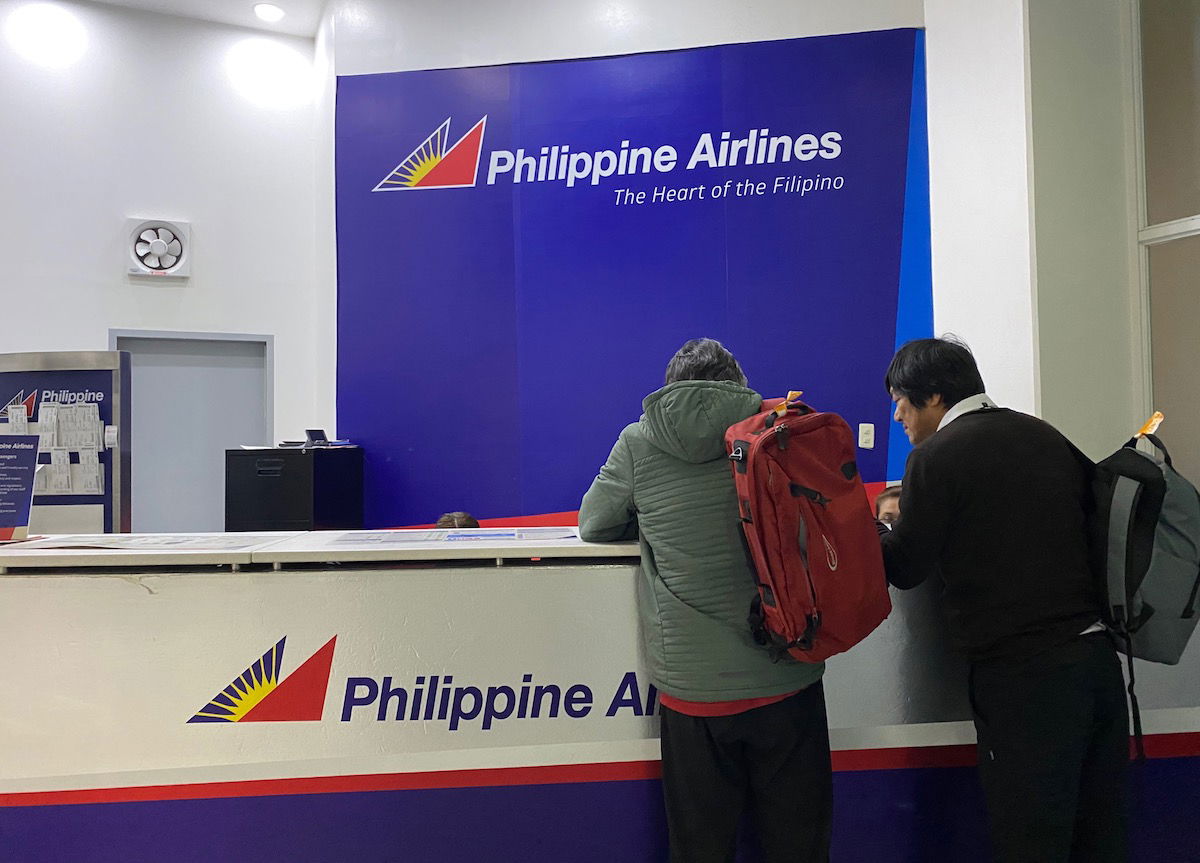Travelers transiting through Manila’s international airport typically don’t require a visa for connecting flights, as long as they stay in the airport’s transit area.

Manila’s Main Transit Airport: Ninoy Aquino International Airport (NAIA)
NAIA serves as the primary international gateway to the Philippines. Located in the heart of Metro Manila, it’s a hub for several major airlines, connecting the Philippines to various destinations worldwide.
Overview of NAIA
Ninoy Aquino International Airport, commonly referred to as NAIA, is named after the late Senator Benigno “Ninoy” Aquino Jr. It consists of four terminals, each catering to different international and domestic flights. Terminal 1 is generally for international flights, while Terminal 2 serves both domestic and international flights for the country’s flag carrier, Philippine Airlines. Terminal 3 is the largest terminal and caters to a mix of domestic and international flights, and Terminal 4 is primarily for domestic flights. With its strategic location in Southeast Asia, NAIA plays a significant role in the region’s aviation industry.
Facilities Available for Transit Passengers
Transit passengers at NAIA have access to various facilities to make their layover comfortable. These include:
- Lounge Areas: Multiple lounges are available for passengers, some of which are airline-specific, while others are accessible with certain credit cards or through a paid entry.
- Dining Options: From local Filipino delicacies to international cuisine, NAIA offers a wide range of dining choices. Restaurants, cafes, and snack bars are spread across all terminals.
- Duty-Free Shopping: Passengers can indulge in some duty-free shopping at NAIA, offering a variety of products from luxury brands to local souvenirs.
- Free Wi-Fi: Stay connected with the world or catch up on work using the airport’s complimentary Wi-Fi service.
- Sleeping Pods and Hotels: For those with extended layovers, there are sleeping pods in certain terminals. Moreover, there are nearby airport hotels for passengers seeking more comfortable accommodations.
- Information Desks: These are scattered throughout the airport to assist transit passengers with their queries and provide guidance on their next flights.
Philippines Transit Visa: Basic Requirements
The Philippines welcomes a significant number of transit passengers every year. While some nationalities are exempted from transit visa requirements, others need to secure one to ensure a hassle-free transit experience. Let’s delve into the essentials of the Philippines transit visa.
Definition and Purpose of a Transit Visa
A transit visa for the Philippines is designed for travelers who have a brief layover in the country en route to another destination. It’s not meant for those who intend to stay and explore the Philippines but rather for those who need to pass through the country due to their flight connections. The primary purpose of this visa is to grant permission for a short stay without undergoing the standard visa application process for longer stays.
Documentation Required
To apply for a transit visa for the Philippines, passengers usually need to provide the following:
- Valid Passport: Must be valid for at least six months beyond the planned date of departure from the Philippines.
- Completed Application Form: To be filled out with accurate details of the traveler.
- Flight Itinerary: Proof of onward travel, showing that the traveler has a flight out of the Philippines to a third country within a specific period.
- Passport-sized Photographs: As per the specifications mentioned in the application form.
- Visa Fee: Depending on the nationality, there might be a fee associated with the application.
- Proof of Financial Means: To ensure that the traveler can sustain themselves during their transit stay.
- Hotel Booking (if applicable): If the transit requires an overnight stay or if the traveler wishes to exit the airport.
Duration of Stay under a Transit Visa
Typically, a Philippines transit visa allows travelers a short stay, often between 24 to 72 hours, depending on the specifics of their flight itinerary. It’s essential to note that passengers must depart the Philippines before the expiry of this duration. Overstaying might result in penalties or further legal complications.
Countries and Nationals Exempted from Transit Visas
Travelers passing through the Philippines may wonder if they need a transit visa for their short layover. The good news is that nationals from many countries are exempted from requiring a transit visa when transiting through the Philippines. Here’s a closer look at these exemptions.
List of Countries with Visa Exemption
The Philippines offers visa-free entry for transit passengers from various countries for short stays. Some of these countries include:
- ASEAN member states like Singapore, Malaysia, Thailand, and Indonesia.
- East Asian countries such as South Korea and Japan.
- Several Western countries including the United States, Canada, Australia, and most EU member states.
- And many others.
It’s essential to note that this list is not exhaustive, and countries’ status can change based on diplomatic agreements. Travelers are encouraged to consult the official Philippine Bureau of Immigration website or contact their nearest Philippine consulate or embassy for the most up-to-date list.
Conditions for Visa-Free Transit
While many nationalities can benefit from visa-free transit, there are certain conditions that passengers should be aware of:
- Duration: The visa-free transit typically allows for stays ranging from 14 to 59 days, depending on the traveler’s nationality. It’s crucial for travelers to ensure they do not overstay this period.
- Valid Onward Ticket: Travelers must present proof of their onward journey, indicating they will leave the Philippines within the visa-free period.
- Passport Validity: The traveler’s passport must be valid for at least six months beyond their intended departure date from the Philippines.
- Entry Points: Visa-free entry is usually valid at major entry points, including Manila, Cebu, and other main ports and airports.
- Purpose: This exemption is primarily for tourism. Those coming for business, work, or other purposes might need different types of visas or permits.
Applying for a Manila Transit Visa
Where and How to Apply
Travelers can initiate the transit visa application process at the nearest Philippine Consulate or Embassy in their home country or place of residence. Here’s a step-by-step guide:
- Research: Check the consulate or embassy’s official website for the most current visa application requirements.
- Gather Documents: Prepare necessary documents like a valid passport, completed application form, flight itinerary, and passport-sized photographs.
- Submit Application: Personally visit the consulate or embassy to submit the application and documents. Some missions might allow online submissions or through authorized travel agencies.
- Attend an Interview: Depending on the country or specific circumstances, an interview might be required. Be prompt and honest in your responses.
Processing Times and Fees
- Processing Times: The time taken to process a Manila transit visa can vary. Typically, it ranges from 3 to 10 working days, but it’s wise to apply well in advance to accommodate any unforeseen delays.
- Fees: The cost for a Manila transit visa can differ based on the traveler’s nationality and the consulate’s fee structure.
Potential Challenges and How to Address Them
Applying for any visa can come with potential challenges. Here are some common issues and how travelers can address them:
- Incomplete Documentation: Always double-check the list of required documents and ensure nothing is missed out. The consulate’s website or customer service helpline can provide clarity.
- Visa Denials: In rare cases, visa applications might be denied. In such situations, the consulate will typically provide a reason. If you feel the denial was based on a misunderstanding or missing information, you can reapply with the necessary clarifications or documents.
- Lost Documents: Always make copies of all your important documents.
- Language Barriers: If English isn’t your first language, consider taking along a translator or seeking assistance from someone proficient in English to ensure your application is accurate and understandable.

Transit Without Visa (TWOV) Program in Manila
Manila, as a primary aviation hub in Southeast Asia, has a Transit Without Visa (TWOV) program in place to streamline the travel process for certain transiting passengers. The TWOV program allows eligible travelers to transit through Manila without the need for a visa, under specific conditions.
Criteria for TWOV
For travelers to be eligible for the TWOV program in Manila, they must meet the following criteria:
- Nationality: Only citizens from certain countries are eligible. Travelers should verify their eligibility based on their nationality through the Philippine Bureau of Immigration website or their local Philippine consulate or embassy.
- Duration: The transit period must be within a specific duration, often not exceeding 24 hours.
- Onward Ticket: Passengers must have a confirmed onward flight ticket to a third country. Transits to the same departure country may not be eligible.
- Stay Within the Airport: Travelers must remain within the international transit area of the airport and not pass through immigration.
- No Prior Immigration Issues: Travelers with past immigration violations or denials in the Philippines might not be eligible for TWOV.
Advantages and Limitations of TWOV
Advantages:
- Hassle-Free Transit: Travelers can transit without the added step of obtaining a visa beforehand.
- Cost-Effective: Eliminates the visa fee, saving both time and money.
- Encourages Travel: It promotes Manila as a viable transit hub for passengers traveling to other destinations.
Limitations:
- Limited Duration: The TWOV program is only suitable for short transits. Longer layovers might require a visa.
- No Exit from Airport: Passengers cannot leave the airport’s international transit area. Those wishing to explore Manila during their layover would need a proper visa.
- Subject to Change: The list of eligible countries and criteria can change. Always check the current regulations before traveling.
- Possible Overcrowding: Popular transit hubs can become crowded, potentially leading to longer wait times or limited amenities.

Tips for Smooth Transit in Manila
Manila, with its bustling Ninoy Aquino International Airport, serves as a critical junction for travelers connecting to various destinations. To ensure a smooth and pleasant transit experience, it’s essential to be prepared and knowledgeable about what the airport offers.
Best Practices for a Hassle-Free Connection
- Check Terminal Information: Manila’s airport has multiple terminals. Ensure you know which terminal your arriving and departing flights are in, and factor in the time required for terminal transfers, if necessary.
- Arrive Early: While the TWOV program can speed up the process, it’s always a good practice to allow extra time for security checks, boarding, and unforeseen delays.
- Keep Essential Documents Handy: Always have your passport, boarding pass, and onward flight information easily accessible.
- Stay Informed: Monitor the airport’s official website for any announcements, flight changes, or essential information related to your transit.
- Pack Essentials in Carry-On: Ensure you have essentials like medicines, chargers, snacks, and a change of clothes in your carry-on, especially if you have a long layover.
Recommendations for Layover Durations
- Short Layovers (1-3 hours): Stay close to your departure gate.
- Medium Layovers (3-6 hours): Explore the transit area’s amenities. These lounges often offer food, showers, and a more comfortable seating area.
- Long Layovers (6+ hours): If you have a visa or are eligible for visa-free entry, consider venturing out of the airport to explore nearby attractions in Manila. Alternatively, find a comfortable spot or a transit hotel within the airport to rest.
Services and Amenities in the Transit Area
- Free Wi-Fi: The airport provides complimentary Wi-Fi, but it’s wise to download any essential entertainment or work beforehand in case of connectivity issues.
- Food and Beverage: Several cafes, restaurants, and kiosks offer a variety of food and drink options.
- Shops: Duty-free shops and other retail outlets are available for travelers looking to buy gifts, essentials, or simply pass the time.
- Lounge Access: Several lounges cater to premium travelers and those willing to pay for access. These lounges offer added comfort, food, and sometimes shower facilities.
- Information Desks: Strategically placed throughout the transit area, they can provide guidance and assist with any questions.